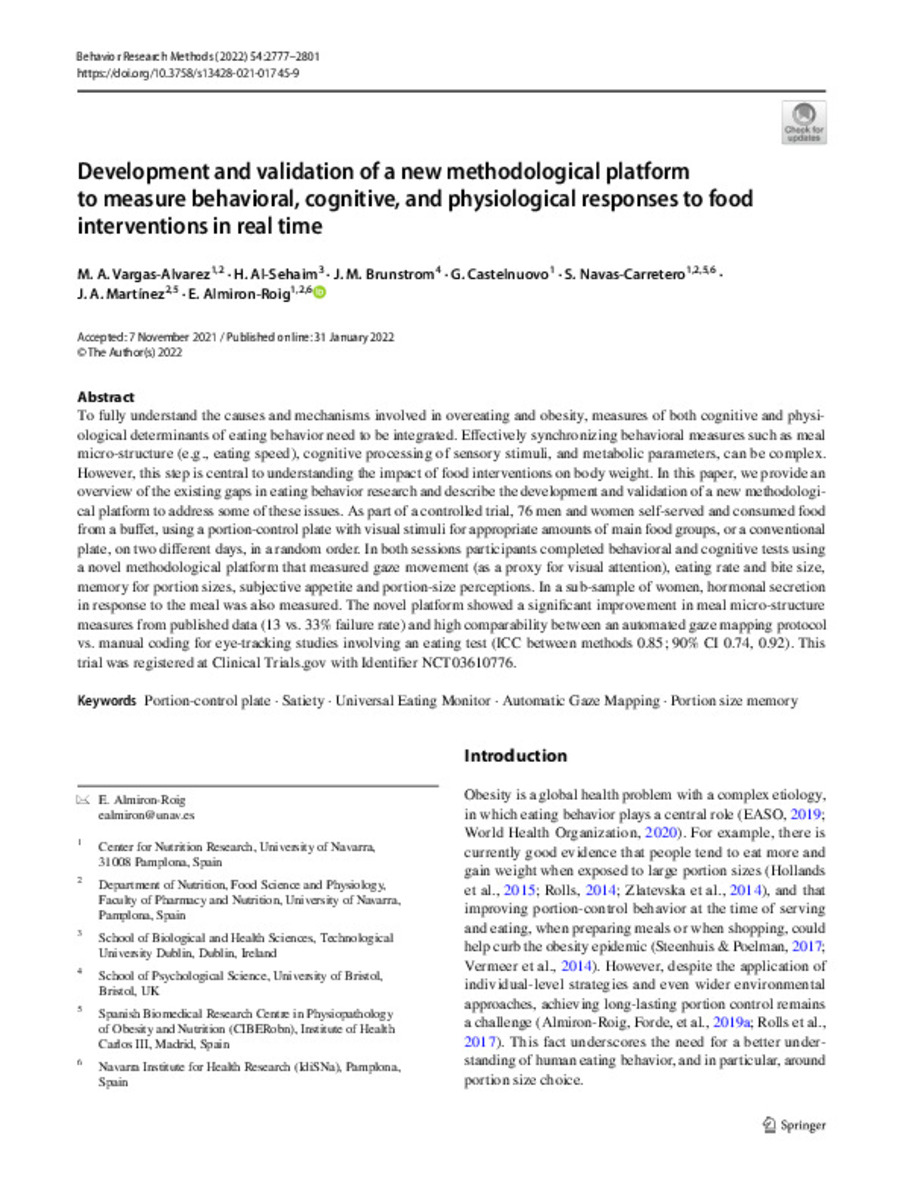Development and validation of a new methodological platform to measure behavioral, cognitive, and physiological responses to food interventions in real time
Keywords:
Portion-control plate
Satiety
Universal Eating Monitor
Automatic Gaze Mapping
Portion size memory
Note:
This article is licensed under a Creative Commons Attribution 4.0 International License
Citation:
Vargas-Alvarez, M.A. (M.A.); Al-Sehaim, H. (H.); Brunstrom, J.M. (J.M.); et al. "Development and validation of a new methodological platform to measure behavioral, cognitive, and physiological responses to food interventions in real time". Behavior Research Methods. 54, 2022, 2777 - 2801
Statistics and impact
0 citas en

Items in Dadun are protected by copyright, with all rights reserved, unless otherwise indicated.







